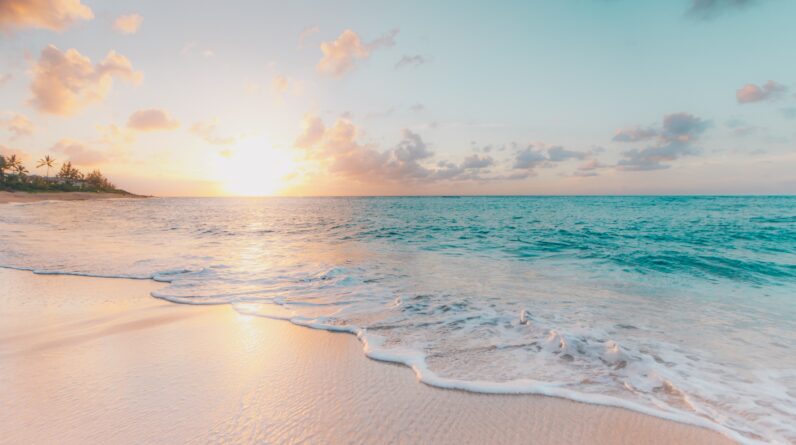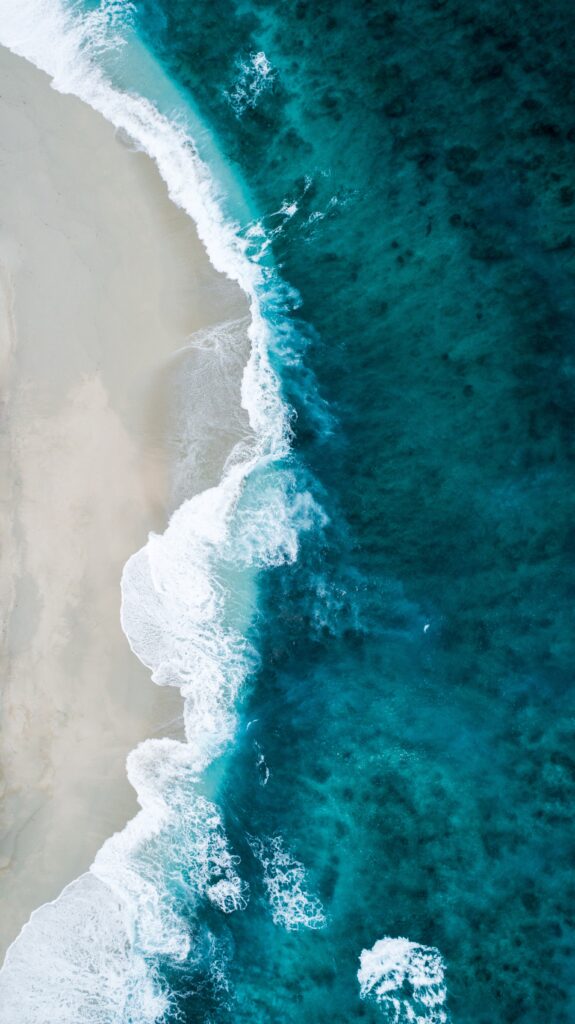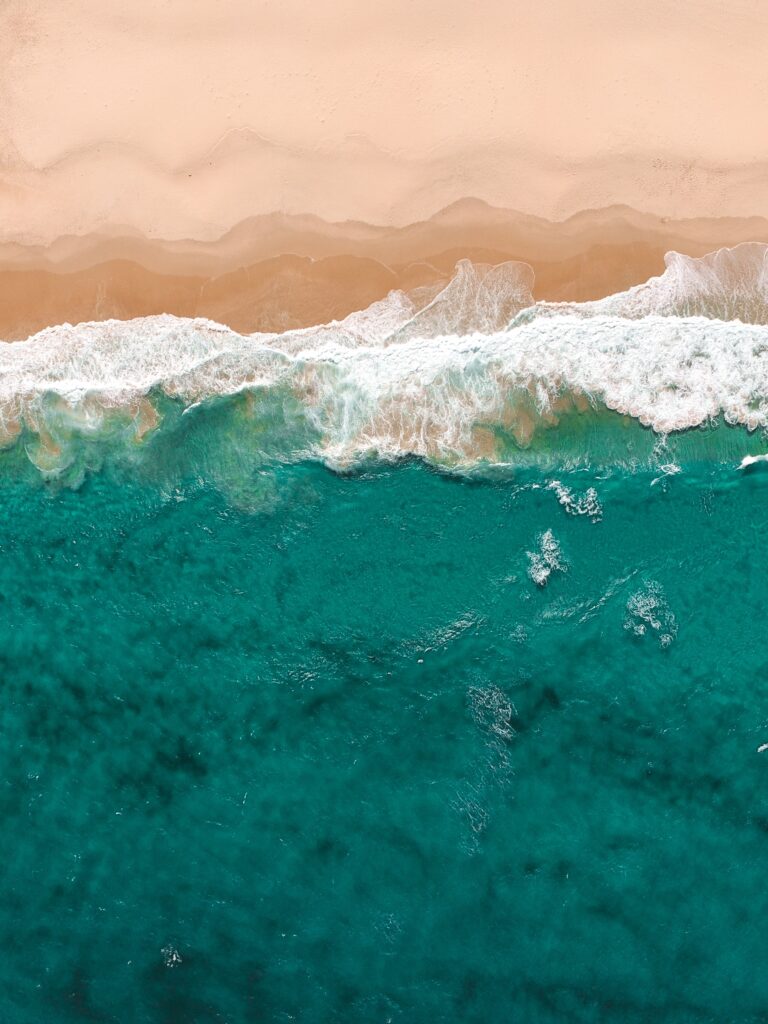
Imagine embarking on a thrilling adventure through the vast ocean, gliding on the waves with ease and excitement. Now envision the exhilaration of doing so in an inflatable kayak. In this article, you will discover the incredible world of exploring the ocean with inflatable kayaks. From their portability and convenience to their stability and versatility, these kayaks offer a unique and accessible way to unlock the wonders of the deep blue sea. Get ready to dive into a world of exploration as you navigate the ocean’s hidden treasures with the help of these remarkable watercraft.
Understanding Ocean Inflatable Kayaks
What are ocean inflatable kayaks?
Ocean inflatable kayaks, also known as inflatable sea kayaks, are specially designed kayaks that are specifically suited for use in the ocean. Unlike traditional hard-shell kayaks, inflatable kayaks are made from durable materials such as PVC or Hypalon, and they can be easily inflated and deflated for convenient transportation and storage. These kayaks provide a stable and buoyant platform for exploring the ocean, making them a popular choice among kayaking enthusiasts.
Benefits of using ocean inflatable kayaks
There are several benefits to using ocean inflatable kayaks. Firstly, their portable and inflatable nature makes them easy to transport and store. You can easily pack them into a backpack or a carry bag and take them with you wherever you go. Additionally, inflatable kayaks are lightweight, making them easier to maneuver and paddle in the water.
Another major advantage of ocean inflatable kayaks is their stability. These kayaks are specifically designed with a wider beam and a more stable hull shape, making them ideal for ocean conditions where waves and currents can be unpredictable. Their stability allows for better control and balance, reducing the risk of capsizing and ensuring a safe and enjoyable kayaking experience.
Furthermore, inflatable kayaks are often more affordable than hard-shell kayaks, making them a great option for those on a budget. They offer a cost-effective way to enjoy ocean kayaking without breaking the bank. Whether you’re a beginner or an experienced kayaker, an ocean inflatable kayak can provide endless hours of fun and adventure on the water.
Factors to consider when choosing an ocean inflatable kayak
When choosing an ocean inflatable kayak, there are several important factors to consider. Firstly, you need to assess the kayak’s weight capacity. Ensure that the kayak can comfortably accommodate your weight and any additional gear you plan to bring along on your ocean adventures. It’s also important to consider the kayak’s length and width, as these dimensions can affect its stability and maneuverability.
Another crucial factor to consider is the kayak’s material and construction. Look for durable materials such as PVC or Hypalon, as these can withstand the rigors of ocean kayaking and provide long-lasting durability. Additionally, check for reinforced seams and multiple air chambers, as these features can enhance the kayak’s safety and stability in case of punctures.
Lastly, consider the kayak’s features and accessories. Some inflatable kayaks come with built-in spray skirts or splash guards to keep you dry in rough ocean conditions. Others may have storage compartments for carrying essential gear or fishing rod holders for added versatility. Choose a kayak that meets your specific needs and preferences to enhance your ocean kayaking experience.
Safety Precautions
Importance of wearing a life jacket
When kayaking in the ocean, wearing a life jacket is of utmost importance for your safety. Even if you are a strong swimmer, unexpected circumstances can arise, and having a life jacket can mean the difference between staying afloat and being in danger. It is important to choose a life jacket that is specifically designed for kayaking and provides proper buoyancy. Remember to always wear your life jacket, properly fastened, throughout your ocean kayaking trip.
Checking weather and tidal conditions
Before embarking on your ocean kayaking adventure, it is crucial to check the weather and tidal conditions. Ocean conditions can change rapidly, and it is important to be aware of any potential hazards such as strong winds, rough waves, or thunderstorms. Pay attention to weather forecasts and tidal charts, and plan your kayaking trip accordingly. If the conditions are unfavorable, it may be necessary to postpone or reschedule your trip to ensure your safety.
Being aware of currents and tides
Understanding ocean currents and tides is essential for safe kayaking in the ocean. Strong currents can swiftly carry you away from your intended route or make it difficult to return to shore. It is important to research and familiarize yourself with the local currents and tidal patterns of the area you plan to kayak in. Plan your trip accordingly and be cautious of any sudden changes in currents or tides. Avoid kayaking in areas with particularly strong or unpredictable currents unless you have adequate experience and training.
Carrying essential safety equipment
Before setting off on your ocean kayaking trip, ensure that you have the necessary safety equipment with you. This includes a whistle or signaling device to attract attention in case of emergency, a waterproof flashlight, a first aid kit, and a knife or multi-tool for various purposes. It is also advisable to carry a spare paddle in case of breakage or loss. Additionally, consider bringing a VHF marine radio or a personal locator beacon for additional safety measures.

Choosing the Right Gear
Selecting the appropriate paddle
Choosing the right paddle for your ocean inflatable kayak is crucial for efficiency and comfort. Paddles come in various shapes, sizes, and materials, and it’s important to select one that suits your height, paddling style, and the conditions you will be kayaking in. Generally, a longer paddle is preferred for ocean kayaking to provide better reach and maneuverability. Look for a paddle that is lightweight yet strong, and ensure that the blade shape and angle align with your paddling technique.
Optimal inflatable kayak design and material
When selecting an ocean inflatable kayak, consider the design and material that would be optimal for your needs. Look for kayaks with a streamlined shape and a pronounced keel, as these features improve tracking and stability in the water. Additionally, consider the material used for the kayak. PVC and Hypalon are commonly used for their durability and resistance to abrasions and UV damage. Choose a kayak with reinforced seams and multiple air chambers for added safety and stability.
Other essential gear for ocean kayaking
In addition to the kayak and paddle, there are several other essential gear items that you should have when kayaking in the ocean. These include a comfortable and adjustable kayak seat for long hours of paddling, a kayak helmet for added head protection in rough conditions, and a dry bag or waterproof case to keep your belongings safe and dry. It is also advisable to wear appropriate protective clothing such as a wetsuit or a drysuit, depending on the water temperature.
Preparing for an Ocean Kayaking Trip
Planning your route
Before heading out on your ocean kayaking trip, it’s important to plan your route in advance. Consider the distance you plan to cover, the time it would take, and the landmarks or points of interest along the way. Take into account your skill level, fitness level, and the expected weather and tidal conditions. Familiarize yourself with the area and any potential hazards or restrictions. Planning your route in advance ensures that you have a clear objective and helps prevent getting lost or encountering unexpected challenges.
Informing someone about your plans
It is always wise to inform someone about your kayaking plans, especially when venturing into the ocean. Before setting out, let a friend or family member know your intended route, estimated time of return, and any emergency contact information they may need. This way, if something goes wrong, someone will be aware of your whereabouts and can take appropriate action. It is crucial to provide updates or changes to your plans if necessary.
Packing essentials for your trip
Properly packing essentials for your ocean kayaking trip is essential for a smooth and enjoyable experience. Start by packing enough water and snacks to keep you hydrated and fueled throughout the journey. Bring a waterproof map or navigation tools, a compass, and any necessary permits or identification documents. Don’t forget sunscreen, a hat, sunglasses, and a dry change of clothes for sun protection and comfort. Additionally, bring a waterproof camera or a smartphone with a waterproof case to capture memorable moments.
Properly inflating and assembling the kayak
Before setting off on your ocean kayaking adventure, it’s important to properly inflate and assemble your inflatable kayak. Ensure that all valves and plugs are securely closed to prevent air leakage. Use a hand pump or an electric pump to inflate the kayak to the recommended pressure. Pay close attention to the inflation instructions provided by the manufacturer. Once the kayak is fully inflated, assemble the paddles, attach the seat, and make sure all straps and fastenings are secure. Give the kayak a final check to ensure everything is in place before launching into the water.

Navigating Ocean Conditions
Understanding wind and wave patterns
When kayaking in the ocean, it is crucial to understand wind and wave patterns. Wind can greatly affect your ability to paddle and can create challenging conditions, especially if it is blowing against the direction you intend to go. Study the wind forecast before your trip and try to plan your paddling route accordingly. Waves can also pose challenges, particularly if they are large or breaking. Learn to read wave patterns and practice proper techniques for navigating them to ensure a safe and enjoyable kayaking experience.
Using proper kayaking techniques
Proper kayaking techniques are essential when navigating ocean conditions. Maintain an upright and balanced posture, with your knees slightly bent and your feet positioned comfortably on the footrests. Use your torso and core muscles to generate power in your strokes, rather than relying solely on your arms. Practice efficient and coordinated paddling techniques, such as the forward stroke, sweep stroke, and braces, to improve your stability and maneuverability in different ocean conditions. Consider taking kayaking lessons or joining a guided tour to learn and refine these techniques.
Dealing with strong currents
Strong currents can present challenges when kayaking in the ocean. It is important to be prepared and know how to handle them safely. If you encounter a strong current, it is advisable to paddle perpendicular to the current rather than directly against it. This allows you to use the current to your advantage and reduces the amount of effort required to make progress. Always keep a close eye on your surroundings and be prepared to adjust your course or seek shelter if the current becomes too strong or unsafe to navigate.
Avoiding dangerous marine wildlife
While exploring the ocean, it’s important to be aware of and avoid potentially dangerous marine wildlife. Some species, such as sharks or jellyfish, may pose threats to human safety. Research the local marine life in the area you plan to kayak and familiarize yourself with any potential risks and safety guidelines. Avoid paddling in areas where feeding or breeding grounds are known to exist. Always exercise caution and respect for the wildlife by maintaining a safe distance and not disturbing their natural behavior.
Exploring Marine Life
Guidelines for observing marine life responsibly
Observing marine life can be a fascinating and enriching experience when done responsibly. However, it is crucial to follow guidelines and ethical practices to minimize any negative impact on the environment and the animals. Always maintain a safe distance from marine animals and never attempt to touch or feed them. Avoid making sudden or loud noises that may disturb their natural behavior. Use binoculars or zoom lenses for closer observation instead. By practicing responsible wildlife viewing, you can enjoy the beauty of marine life while preserving their habitats.
Spotting fish, dolphins, and turtles
The ocean is teeming with diverse marine life, and kayaking offers a unique vantage point to spot various species such as fish, dolphins, and turtles. Keep a lookout for schools of fish swimming beneath your kayak, their vibrant colors shimmering in the sunlight. Dolphins are often playful companions of kayakers and can be seen swimming alongside or leaping out of the water. Turtles may also appear, gracefully gliding through the ocean. Remember to maintain a respectful distance and not disturb their natural behavior.
Identifying different types of seabirds
Seabirds are a common sight during ocean kayaking trips and can add to the awe-inspiring experience. Paddle near coastal cliffs or rocky shores to observe nesting colonies of birds such as gulls, cormorants, or puffins. Watch them soar through the sky or dive into the water to catch fish. Learn to identify different seabird species based on their size, shape, coloration, and behavior. Seabirds are an integral part of the marine ecosystem and play important roles in maintaining the balance of oceanic food chains.
Using snorkeling gear for underwater exploration
To further explore the wonders of the ocean, consider bringing snorkeling gear during your kayaking trips. With a mask, snorkel, and fins, you can venture beneath the surface and immerse yourself in a vibrant world of coral reefs, colorful fish, and other marine creatures. Look for calm and clear areas to snorkel, and be mindful of your surroundings to avoid damaging fragile coral or other marine habitats. Always practice responsible snorkeling by never touching or disturbing marine life and leaving no trace behind.

Visiting Coastal Caves and Landmarks
Safety considerations for exploring caves
Exploring coastal caves can be an exciting and adventurous aspect of ocean kayaking. However, it is essential to prioritize safety when venturing into these unique environments. Before entering a cave, carefully assess its accessibility and potential dangers. Be aware of tidal changes that can flood or block the cave entrance, potentially trapping you inside. Never enter a cave alone and always let someone know your plans. Bring a reliable light source and a helmet for protection against falling rocks or low ceilings. Familiarize yourself with cave rescue techniques and practice caution at all times.
Discovering hidden coastal gems
One of the joys of ocean kayaking is discovering hidden coastal gems along your paddling route. Keep an eye out for secluded beaches, untouched coves, or hidden bays that can be accessed by kayak. These hidden gems offer a chance to relax, swim, or simply soak in the beauty of nature away from crowded tourist spots. Remember to be respectful of the environment by leaving no trace and adhering to any local regulations or restrictions in place to protect these pristine coastal areas.
Learning about historical landmarks
Coastal areas often boast historical landmarks and sites that can be explored during your ocean kayaking adventures. Research the area you plan to kayak and learn about any significant historical events or landmarks that may exist. Paddle near lighthouses, shipwrecks, or old fishing villages to delve into the rich history of the coastline. Some areas may offer guided tours or provide information boards for a deeper understanding of the historical significance. Discovering these landmarks adds an educational and cultural element to your kayaking experience.
Adapting to Changing Conditions
Adjusting to varying water temperatures
Ocean waters can vary in temperature depending on the location and season. It is important to be prepared and adapt to these changing water temperatures for your comfort and safety. Dress appropriately, considering the water temperature rather than just the air temperature. In colder waters, wearing a wetsuit or a drysuit can help regulate your body temperature and prevent hypothermia. In warmer waters, lightweight and breathable clothing is preferable. Always carry extra insulation layers and be aware of the signs of hypothermia or heat exhaustion.
Dealing with changing weather patterns
Weather conditions in the ocean can change rapidly, and it is crucial to be prepared and adaptable. Monitor weather forecasts before your kayaking trip and throughout your journey if possible. Be prepared to adjust your plans or seek shelter if unfavorable weather conditions arise. In the event of sudden storms or high winds, it is essential to seek immediate safety by finding a protected area or returning to shore. Stay alert and be proactive in managing changing weather patterns to ensure your safety on the water.
Navigating rough waters
Rough waters can present challenges when kayaking in the ocean, but with proper techniques and preparation, you can navigate them safely. Maintain a stable and balanced posture in your kayak, using your core muscles to absorb the movement of the waves. Employ a low and wide paddle stroke to maintain control and stability. It is also advisable to paddle at an angle to the waves rather than directly into them, as this reduces the risk of capsizing. Practice and familiarize yourself with bracing and self-rescue techniques in case of unexpected dips or rolls.
Changing plans due to unexpected circumstances
Despite careful planning, unexpected circumstances may arise during your ocean kayaking trip. It is important to be flexible and willing to change your plans if necessary. If the weather deteriorates or you encounter unforeseen challenges such as equipment failure or fatigue, it may be necessary to alter your route, seek shelter, or return to shore earlier than planned. Always prioritize safety and make decisions based on the conditions and your own capabilities. Being adaptable and willing to change plans ensures a safe and enjoyable kayaking experience.
Maintaining and Repairing Your Kayak
Cleaning saltwater and sand
After each ocean kayaking trip, it is important to thoroughly clean your kayak to remove saltwater and sand. Rinse the kayak with freshwater, paying particular attention to the valves, straps, and crevices where salt can accumulate. Use a sponge or brush to remove any sand or debris from the surface. Allow the kayak to dry completely before packing it away to prevent mold or mildew growth. Regular cleaning helps prolong the lifespan of your kayak and ensures that it remains in optimal condition for future adventures.
Preventing wear and tear
To prevent wear and tear on your inflatable kayak, it is important to practice proper care and maintenance. Avoid dragging or sliding the kayak on rough surfaces to minimize abrasions. When launching or landing, look for smooth and sandy or grassy areas to protect the bottom of the kayak. Store the kayak away from direct sunlight or extreme temperatures, as these can degrade the materials and weaken the kayak over time. Additionally, avoid overinflating the kayak, as this can put unnecessary strain on the seams and valves, leading to potential leaks or damage.
Repairing minor damages
Despite your best efforts, minor damages may occur to your inflatable kayak during use. It is important to address these damages promptly to prevent them from worsening. Most inflatable kayak manufacturers provide repair kits that include patches and adhesives specifically designed for their kayaks. Follow the manufacturer’s instructions carefully when repairing any damages. Clean and dry the affected area thoroughly before applying the patch, ensuring a tight seal. Regularly inspect your kayak for any signs of wear, damage, or leaks, and address them as soon as possible to maintain the integrity of your kayak.
Storing your kayak properly
Proper storage is essential for maintaining the longevity of your inflatable kayak. After each use, ensure that the kayak is completely dry before deflating and folding it. Remove any excess air from the chambers and fold the kayak according to the manufacturer’s instructions. Avoid storing the kayak in extreme temperatures or direct sunlight, as this can degrade the materials over time. Ideally, store the kayak in a cool and dry location, away from sharp objects or potential sources of punctures. Using a storage bag or cover can provide additional protection and keep your kayak secure when not in use.
Conclusion
Ocean inflatable kayaks offer an exciting and convenient way to explore and enjoy the wonders of the ocean. From their portability and stability to their affordability and versatility, these kayaks are an excellent choice for both beginners and experienced kayakers. By understanding the benefits of using ocean inflatable kayaks, considering safety precautions, choosing the right gear, and adapting to changing conditions, you can embark on thrilling ocean kayaking adventures with confidence and enjoyment. Remember to practice responsible tourism and respect for the environment and marine life while exploring the ocean. With proper preparation and a sense of adventure, the possibilities are endless for discovering the beauty and serenity of the ocean with your inflatable kayak.








